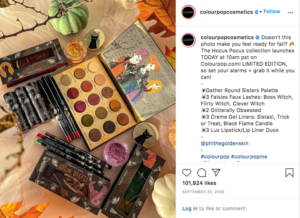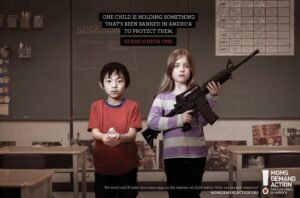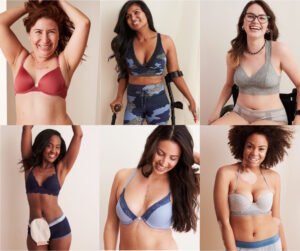5 emotional triggers in marketing
By Felicia Guthrie
There are many ways that your favourite brands and businesses appeal and connect to you through marketing and one of the key ways is through psychology. They may use certain colours to convey a feeling or quality, they may use social proof (like having influencers promote their products), they may use scarcity (i.e. like saying something is limited or “almost sold out” to push you to purchase), and they can use emotional triggers to connect with consumers making you more likely to purchase.
Today, we’ll be focusing in on emotional triggers.
Want to know some of the emotional triggers that top brands use to influence consumer behaviour?
Let’s take a look:
FEAR
Sometimes, marketers use fear to create urgency and drive consumers to make a sale. As mentioned above, one of the main ways that they will use fear is through scarcity. Brands may list something as “Limited Edition,” or use phrases like, “Limited Time Only,” “Only __ left!” or “Almost Sold out!” This triggers a consumer’s FOMO (fear of missing out) and pushes them to buy sooner rather than later or not at all. You may see A LOT of brands and business do this, from special deals like Black Friday or Boxing Day specials, to limited edition cosmetic collections, seasonal fashion collection launches, and more. You may even see it with bigger purchases such as televisions and cars.
If you’re releasing a seasonal product, limited amount of something, or have a special (and infrequent) deal, you can certainly use this tactic – and fairly easily, to influence consumer behaviour.
Here are a few examples of a brand using this trigger:
Notice how they use phrases like, “Limited Edition, grab yours ASAP,” or “LIMITED EDITION, so set you alarms + grab it while you can!”
There are other ways that a brand, business, or organization may use fear as an emotional trigger and fear can be especially present in nonprofit/charity marketing campaigns such as PSA’s.
Let’s take a quick peek at a few:
INCLUSIVITY
Inclusivity has been a hot button issue for a long while (but especially in the last several years) and it’s constantly growing and evolving, so it’s no surprise that inclusivity is an emotional trigger. Inclusive marketing will embrace and highlight diversity; it creates a sense of belonging and acceptance. It celebrates our differences and what makes us, us. And if you use it, you better stand behind the message because authenticity is important – no one wants lip service.
A great example of an ad that utilized inclusivity is the Starbucks ad below. It won Channel 4’s “Diversity in Advertising Award 2019”. It tells the story of a young trans man named James. James is constantly referred to by his dead name (given name at birth) which he feels a disconnect with, at the end, we see him try out his new name, “James” at Starbucks.
Starbucks stated, “At Starbucks, writing your name on a cup and calling it out is a symbol of our warm welcome. It’s a small gesture, but it's symbolic of what we believe in: Recognition and acceptance, whoever you are, or want to be. We welcome everyone.” Pay attention to the last two lines especially. This ad and statement highlighted that Starbucks is an inclusive environment, “We welcome everyone.” They took this a step forward, by stating their support for “Mermaids” (a charity supporting young transgender and gender diverse people and their families) and donating part of their profits to the organization.
This idea was also sparked by an insight that trans people often try out their new names at Starbucks, so it also felt relevant to their brand.
Another brand showcasing diversity and inclusion is the intimate clothing brand Aerie (more on them later). The #AerieReal campaign celebrates all women and it showcases an amazing set of diverse women. Let’s take a peek at this campaign from 2018:
TRUST
Trust is hugely important in marketing, especially because consumers are looking for authenticity and transparency – now more than ever. Trust can drive people to purchase from you. Trust makes or breaks your brand. Brands will use a variety of tactics to elicit trust – sometimes it’s very obvious and they’ll state it outright, like using a toothpaste brand stating they’re recommended by dentists. And sometimes it’s not only what they’re saying but what they DO.
For example, more and more brands, particularly in the fashion and beauty industries, are ditching the body retouching. One of the brands leading the way in this is the brand Aerie. The Aerie Real campaign, built trust among consumers and in doing so also boosted their sales and reputation (for example, they saw a 32% increase in same-store sales). In addition to their Aerie Real campaign, they also committed to highlighting diversity and inclusion (as mentioned above), which contributed to consumers perception of the brand (and gives consumers a sense of belonging and acceptance).
Here’s a look at one of the images in the #AerieReal campaign:
If you’d like to build a reputation of trust, one way you can do this in 2021 is by working with relevant influencers who can act as ambassadors for your brand. The right person will already be seen as an expert or leader in your industry and will be trusted by consumers.
HAPPINESS
We all want a happy life, so it’s no surprise that some brands try to tap into happiness some way or another. Think of those ads, you’ve probably seen them: a woman eats a salad or a yogurt and smiles, maybe she’s dancing. While at the surface level you may find them silly, they’re probably trying to appeal to you on a subconscious level. While they may list some benefit of their product, they’re also showing how happy it would make you.
Now let’s think of one a little more obvious. Coca-Cola. Some of Coca-Cola’s most popular and known taglines and campaigns have been “Open Happiness” and “Taste the feeling.” It reinforces the idea that Coca-Cola is for everyone and that it’s also a simple pleasure. Many of their ads have focused on happiness as well as friendship and community.
COMMUNITY/BELONGING
Lastly, let’s take a look at community and belonging, these are also used by brands as emotional triggers because part of our basic needs lies a sense of belonging. Some of the biggest brands use the idea of community or belonging to create and strengthen customer loyalty, can you think of any?Here are a few examples:
Coca-Cola vs. Pepsi
Playstation vs. XBox
DC vs. Marvel
PCs vs. Apple
What do the above brands ALL have in common? They have fiercely loyal customers or fans who often won’t stray from one brand to the other. My significant other and I were once stopped on the street by a Pepsi ambassador along with another couple, they asked if we’d do a blind pop taste test (Coke vs. Pepsi) to which we all agreed. First, they asked us our favourite of the two, with my partner and I choosing Pepsi and the other couple choosing Coke, then we all did the taste test. Based on the sample, the 4 of us all chose the same beverage as our favourite and what was it: Pepsi. The brand ambassador then offered us all free Pepsi’s and although the other couple preferred it in the blind test, they actually refused the FREE Pepsi. That’s how loyal they were to Coca-Cola.
So how do brands create this sense of community and how can you do so too? They may do so in many ways today, such as sharing user generated content, using language like “Join us,” engaging with their audience, or supporting a cause or niche community.
Coca-Cola has created several campaigns around friendship and community. From their “Share a Coke” ad, inviting you to share a coke with a friend to one of the most famous ads of all time, “I’d like to buy the world a Coke.” In fact, Bill Backer who came up with the “I’d like to buy the world a Coke” ad, had the idea while stuck at an airport. He said he saw people from all over the world laughing and sharing a coke, which changed his perception of the brand and that he started to see it as “as a tiny bit of commonality between all peoples,” again tapping into the idea of community, belonging, and togetherness.
Brands may also tap into your sense of not only being part of community but wanting to belong in general. You can do this by using phrases like “Find out what everyone’s talking about.” or “Don’t get left out.”
Want to know more about marketing psychology? Check out these related articles:
The 6 Principles of Persuasion Can Help You Boost Your Marketing Strategy
Alternatively, if you’re ready to tap into emotional marketing and build a deeper connection to your audience and you’d like a bit of help, sign up for a FREE 20 minute consultation with us!








